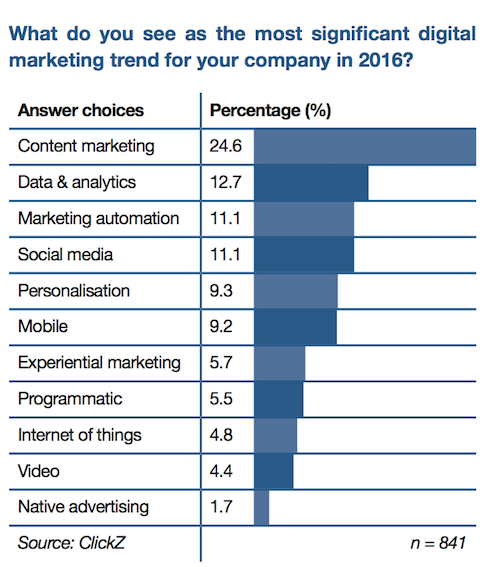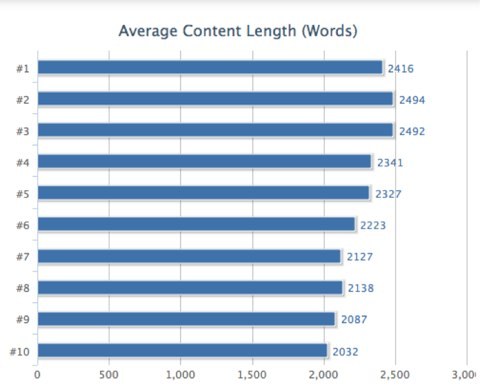Content marketing is a an accumulation of popular marketing trends that have led to a strategic approach for using content as the primary force of brand exposure. We leave behind the old way of pushing out mindless amounts of content, to creating content that goes higher-up in value compared to that of competition.
Any digital marketing expert will tell you that content marketing has become a competitive market, and requires a lot of effort to capture the attention of every day consumers. Whereas in the past we saw a lot of energy -- financial -- being dedicated towards digital advertising, brands now know for a fact that content marketing is amongst the most rewarding marketing strategies.
Forbes just published a case study of 10,000 individual articles that prove once over the potential of content marketing in brand promotion.
Working as a content marketing expert and consultant, I wanted to express a few of my own thoughts on content creation, and what are the most rewarding content strategies that search engines like Google reward the most these days.
First though, we want to make sure that we understand what are the things we shouldn't do in content marketing, which are:
- Blindly creating new content based on assumptions of what your audience wants and needs.
- Avoid going extra mile with research to add more quality. Thoroughly researched and optimized content outperforms anything mediocre.
- Creating content without any planned goals is the same as not creating content at all. Content marketing is to be seen as a strategic tactic for moving forward with marketing-based goals.
And then we have the things we should do with our content, and our content marketing strategy.
Create individual, but also global content goals
Any of the top SEO companies that you will find in online directories, or doing plain Google searches are going to tell you that organic content growth begins with a strategy. And it will start with asking yourself:
- What is the main marketing goal you're reaching for?
- What is the purpose of your content?
- What is the content helping to promote?
Then you move on to understanding your audience more, and establishing an editorial calendar for the content marketing team. Hiring professional freelancers isn't that bad these days, if you know what you are looking for, finding a top-level freelancer isn't going to be difficult.
What does it mean to create content for your audience?
Google is getting more intelligent, artificially intelligent. Curating great content to show to searchers has become much easier for search engines like Google, and this leads to an increased need to create content that answers questions, rather than giving an overview of a particular problem.
I work with a number of clients, sometimes for promotional purposes, and it's still very evident that many brands want to put the emphasis on the length of the content, rather than the quality of content. If something can be told in 600 words, without adding extra fat, then that is the way to go. Stretching to 1,000 words for the sake of Google signals isn't worth it, users don't have the attention span to re-read what you already wrote ten times, because there's a tendency to believe that more words equals more revenue or leads.
A popular research study from QuickSprout shows that content greater in length does perform better:
But, even these kinds of tactics are beginning to fade with introduction of Semantic Search, where Google can easier understand what the user is asking for, and will select to promote content on first result pages not because of its length, but simplicity in conveying the answer to that particular question.
So, if you want to improve your contents readability, but also attractiveness, you need to focus on:
- Easy to consume paragraphs and sentences that are packed with concise information.
- Easy to navigate headings and sub-headings that Google could use to promote with featured snippets.
- Using Ordered and Unordered lists to promote the key information of any content you write.
- Creating a visual content experience where users can learn from images, and text together
Before 2011 when content marketing really exploded, this kind of approach was known as evergreen content, content that can sustain itself over many years thanks to its insightfulness and adaptability to a certain topic. Infographics are a trending content production topic that involves displaying content such as research, data, and general tips in the form of a visual image. You can see an example of a well executed Infographic accompanied on one of the posts from BambooHR.
But surely, tapping into any popular infographic directories is going to yield the necessary context to move forward with in your own content strategy.
Now brands are more interested in publishing content that has an average lifespan of 2 to 5 years. This puts great pressure on those who are accustomed to traditional tactics, but also makes way for a new era of content that can grow organically thanks to its impeccable value that it gives to the consumer.


